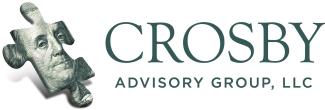What investment mix is right for you?
The other day I got an email from a listener named Alan in Mentor Ohio who writes, “Nate, I am 56 years old and I feel I am within 10 years of retirement, how do I determine the appropriate mix of investments and how diversified should my portfolio be based on where I am in my work cycle and life cycle.”
Well Alan, that is a great question and one every investor should ask regardless of age. Determining the right mix of investments that is appropriate for your goals, time horizon and risk tolerance is not, or at least should not be an undertaking reserved only for those entering retirement. It’s an every age question, one that I recommend you revisit at least every three to five years.
In the world of investing and planning, the word used to describe a specific investor’s mix of investments within their portfolio is called Asset Allocation. And today we are going to discuss a few questions that you can ask yourself to help you determine if your current investment allocation is right for you.
One of the best pieces of investment advice that I have ever received came to me from a man who said to me, “Nate, despite what you may feel or may have been told, you have no control over your investment return. The only thing that you have the power to control is the level of risk that you assume with your money.” While the fool chases return like a plane that has already left the runway, a savvy investor sets their level of risk and let’s return come to them. I Kind of feel like I could do a mic drop right now. That’s how good I think that advice is. It is simple and clear and can keep you grounded when the maniacs in media report on investing as if everyone with a 401k or IRA is day-trading. We are not. But here is the next logical question and the reason I can’t drop the mic and walk off stage just yet. If the savvy investor attempts to control risk and not return, how do we control risk?
So many good questions. Life when we examine it is a constant effort to mitigate risk. I wore a seatbelt to work today because I knew there was a chance I could get in an auto accident and I have three little girls who count on me coming back home in the evening. If I am traveling on a plane I consume large amounts of zinc and vitamin C because I know I will be stuck in a capsule breathing recycled air from 100 plus other people for three hours. My efforts of course are trying to reduce my risk of catching a cold. If I’m running a morning trail run with John LaCava from Episode 7, I’m going to eat a very light breakfast. In doing so I’m trying to reduce the risk of having my breakfast end up on the trail. Risk mitigation. Limiting your chance that something bad will happen.
In the world of investing, risk is mitigation is achieved by diversifying over a variety of correlated and uncorrelated investments. Diversification is achieved through Asset Allocation. Our asset allocation will tell us how concentrated are our investments.
You’ve heard your parents say don’t put all of your eggs in one basket. Call them up and thank them. They were instilling the benefits of diversification in you at a young age. If all of my money was invested in one company stock, the risk of loss I am assuming is highly concentrated in the success or failure of that company. But if that same amount of money is invested in 20 stocks, then obviously I am spreading the risk of loss over 20 different companies. If a few of those companies underperform, all my money is not lost. You guys know this stuff, you are more advanced than this discussion right now but we just need to give a quick background. Because you see we can spread risk even further than just investing in different stocks. We can also spread the money across different asset classes. An asset class is a group of investments that share similar characteristics.
Common Types of Asset Classes
Stocks sometimes you’ll hear them called equities because they represent some type of ownership interest. Fixed Income. Fixed income investments pay a scheduled interest. The interest may vary but they are designed to pay at fixed intervals. Examples of fixed income include annuities, bonds, certificates of deposit and money markets. The third common asset class is Cash. Good, cold, hard cash. Cash helps facilitate rebalancing and also adds stability to a portfolio. Because Cash does not grow the percentage is typically 5% or less unless the account is set up for distribution. The fourth type of asset class you sometimes see in a portfolio are what fall under Alternative investments. These often include things like gold, silver, precious metals, commodities and real estate. With most investors you will typically find stocks and fixed income make up the largest portions of their portfolio.
The reason why spreading money over a variety of asset classes further diversifies a portfolio is because these different asset classes all do not have a positive correlation, meaning that just because stocks go down doesn’t mean bonds will go down with the same severity. It is possible that they may even display a negative correlation, meaning if stocks go down fixed income may remain steady or increase in value. You may see this in times when investors flee stocks in fear for the perceived increased stability of fixed income. Don’t forget non-variable fixed income options. A fixed annuity for example doesn’t care what stocks are doing, it just pays or credits interest at fixed intervals.
Diversifying by investing in different asset classes can reduce volatility and there are times when it is beneficial to do that, which we will get into in a few minutes.
A portfolio that is invested in 100% stocks may be diverse in stock exposure. Meaning maybe the investor is invested in hundreds of stocks through stock or equity funds but the investor is concentrated in one asset class. This may be fine if the investor is an aggressive investor with a time horizon of 10 years or more and they are comfortable with assuming potentially high levels of volatility with the value of their portfolio. Generally, as an investor ages, we tend to make their portfolio more conservative. This is most often achieved by reducing stock exposure.
As an investor nears retirement the percentage of their portfolio that is represented by stocks is systematically reduced as the account is prepared to produce retirement income (assuming that is the goal of the account. It doesn’t have to be. Maybe I have an investment account that I plan on passing to my grandchildren. Well that account has an entirely different time horizon than my own retirement account.) However, if my account is intended to produce or supplement retirement income than it would serve me well to make the account less volatile as I near retirement. Why?
One thing we have to pay special attention to in retirement is a concept known as sequence of returns. Studies find that success or failure of being able to provide lifetime retirement income largely depend on random luck of the market within the first several years of retirement. If your account suffers a large market loss while you are actively withdrawing money to live off, the account may have a difficult time recovering, thus you may run the risk of running out of money much sooner than you expected. So to protect against sequence of returns the account is positioned for less volatility, more income producing investments such as the ones we mentioned with fixed income (annuities and bonds primarily) and stock exposure is reduced.
In recent years that has been new theories introduced which suggest that initially, a retiree’s portfolio should be made more conservative early in retirement to protect against sequence of returns then gradually made more aggressive by increasing stock exposure since stocks give investors the best chance of beating inflation. The first several years of retirement are always the most crucial in retirement planning.
Are we off topic? Actually we are not off topic, all this leads to a process. Determining asset allocation is a process that never stops. It should be evaluated at every step of the investment process. So how do we determine it?
You can start with a generic age based allocation. The old age based allocation suggested that you subtract your age from 100 and the answer you get should be the percentage of stocks in your portfolio. So if you are 30 years old you’d have a portfolio that was 70% stocks. If you were 50 years old you’d have a portfolio that was 50% stocks. But this is just a start. The age based allocation does not take into consideration time horizon, the objective of the account or personal risk tolerance.
As time horizon nears we tend to begin getting the account ready for its purpose. Are we using the account to buy a beach home? If so then we may move it to largely a cash position to make sure the money is there. Are if using the account to produce retirement income? If so we may begin positioning the account into more income producing investments.
I also mentioned personal risk tolerance. Your personal risk tolerance can be found by answering any of multiple risk tolerance questionnaires put out by investment companies. If you have never had your risk tolerance profiled, call us up, it is absolutely free and it can be done over the phone. Knowing your risk tolerance can help you construct a portfolio that is right for you. How does all this come into play?
Take myself for instance. I am 38 years old. If I subtract my age from 100 tells me that age portfolio of 62% stocks and 38% fixed income. But if my time horizon is still 20 years into the future and my personal risk tolerance comes back as aggressive, the age based portfolio may be a little conservative for me. So I may want to spice that up a bit by going 70% stocks and 30% fixed income.
For the sake of conversation let’s assume our friend Alan in Mentor is a moderate risk level investor. (Alan don’t let me label you. Get your risk tolerance profiled!) He says he believes he is within 10 years of retirement. That tells me that his time horizon is shortening. His age based allocation would put him at 44% stocks and for the sake of conversation the balance of his account is 55% fixed income and 1% cash. Personally I think that is close. We may put him at a 50/50 split between stocks and fixed income for a few more years but if he were a moderate risk level investor I think the age based allocation is pretty close. But remember you want to take the whole picture into consideration: time horizon, objective of the account, personal risk tolerance and your age. Collecting this information can help make sure your investment portfolio is always allocated appropriately for you.

